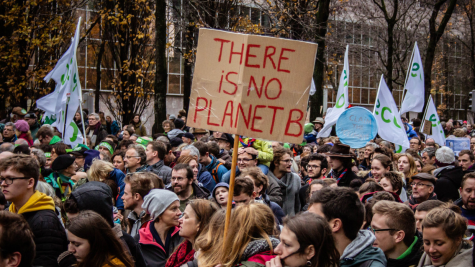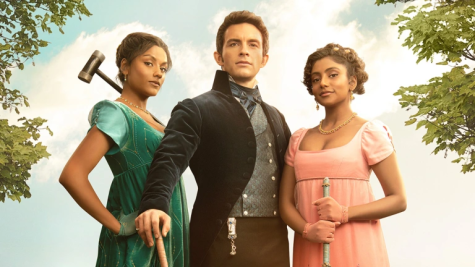The Batman review
There are some characters Hollywood just cannot let go of, whether it be because of their massive box office appeal or just a plain fear of taking a risk, there are some characters that will never stop receiving reboots. One of these characters is Batman.
The movie overall is enjoyable. The second act drags on for a while, taking too much screen time to wrap up the detective portion of the story before diving into the action-packed third act. The romance between Batman (Robert Pattinson) and Selina Kyle (Zoe Kravitz) was poorly developed and dangerously close to insta-love, given how little time they spend together before they start kissing, but these are minor structural complaints. Robert Pattinson, a reclusive man covered in goth eyeliner genuinely feels like a man that would dress up like a bat and fight crime. Michael Giacchino’s musical score is a beautiful work of art that uplifts the gothic and noir feel of the movie. It is a film that is a true homage to the noir films of the seventies it was inspired from. However, when I left the theater, these musical scores were not what I was thinking about.
This latest iteration of the Caped Crusader clearly meant to be a serious adaptation, and it is made blatantly obvious in the first few minutes of the movie. With self-serious, droning music playing and an extremely dark color palette, the opening manages to nail the “grim and serious” aspect of Batman early on. The opening effectively establishes what the tone and direction of this movie will be, but then backtracks on exploring it fully. It wants to convey how dirty and corrupt this iteration of Gotham is — a man is almost beaten up by a gang in the beginning, a prostitute is murdered and multiple people are blown up in an epic car chase. But it also wants to ultimately end on a hopeful note, where good people like Jim Gordon (Jeffrey Wright), the “good” cop and Bella Real (Jayme Lawson), the vaguely liberal and therefore the good politician, swoop in and save the day. As a result, the movie overall sends the message that it was not the system in Gotham that was corrupt— it was simply that bad people were corrupting it. All that needed to be fixed were good people coming in to uphold the system. This idea is further compounded by Bella Real’s speech at the end of the movie, where she promises to regain the trust of the people. At the end of the movie, the so-called corruption plaguing Gotham is gone, but there was never any kind of systemic overhaul of any kind in order to ensure Gotham’s corruption truly is gone.
“The Batman,” shines a light on social issues affecting America today — specifically focusing on police corruption. It talks about “dirty cops” and how their deeds affect people, especially in Gotham. But it ultimately splits cops into a binary group of “good” and “bad” cops (The bad cops being the ones who take bribes and the good cops being the ones who let Batman do what he wants). It does not dive into the nuance of the issue, and the “good” cops, specifically Jim Gordon who works closely with Batman throughout the movie, never have to reflect on the corrupt system they were a part of, or how to change that. They simply accept they were the “good” ones. This is apparently enough to completely overhaul police corruption and thus allow the story to continue. Whether consciously or not, “The Batman” endorses the real-life argument that having enough good cops and rooting the bad ones out are enough to destroy police corruption — not any kind of structurally or policy based police reform.
Of course, it is important to note that I never anticipated that the movie would touch upon these topics. Hollywood blockbusters tend not to interact with their themes too deeply, and that is because they are entertainment first and foremost. It also is not the first superhero movie that tried to draw serious parallels to the real world. “Black Panther” specifically based Erik Killmonger off of Malcolm X. It is not the first Batman movie to do so either; several critics noted that Bane’s struggle in “The Dark Knight Rises” echoed the Occupy Wall Street movement that was gaining popularity at the time. But it does also need to be noted that Bane and Killmonger were the bad guys of their respective movies, and that their villainous actions reflected on the revolutionary movements they claimed to represent.
Ultimately, “The Batman” is a sign that superhero movies are evolving and are slowly trying to shift their stories to contain more nuanced and serious topics within our popular culture. And it will be interesting to see if the filmmakers dive more boldly into the themes of corruption and waste in the anticipated sequel — or shy away from it, lest the movie becomes less entertaining.












